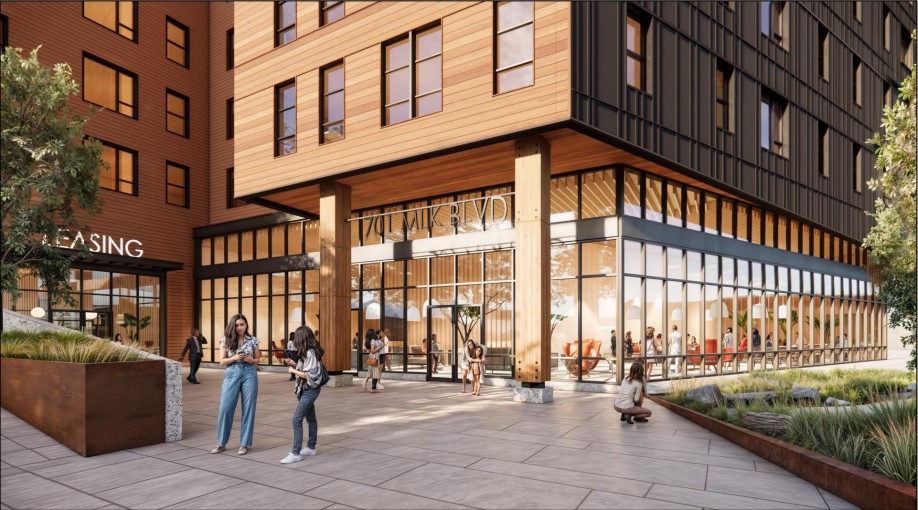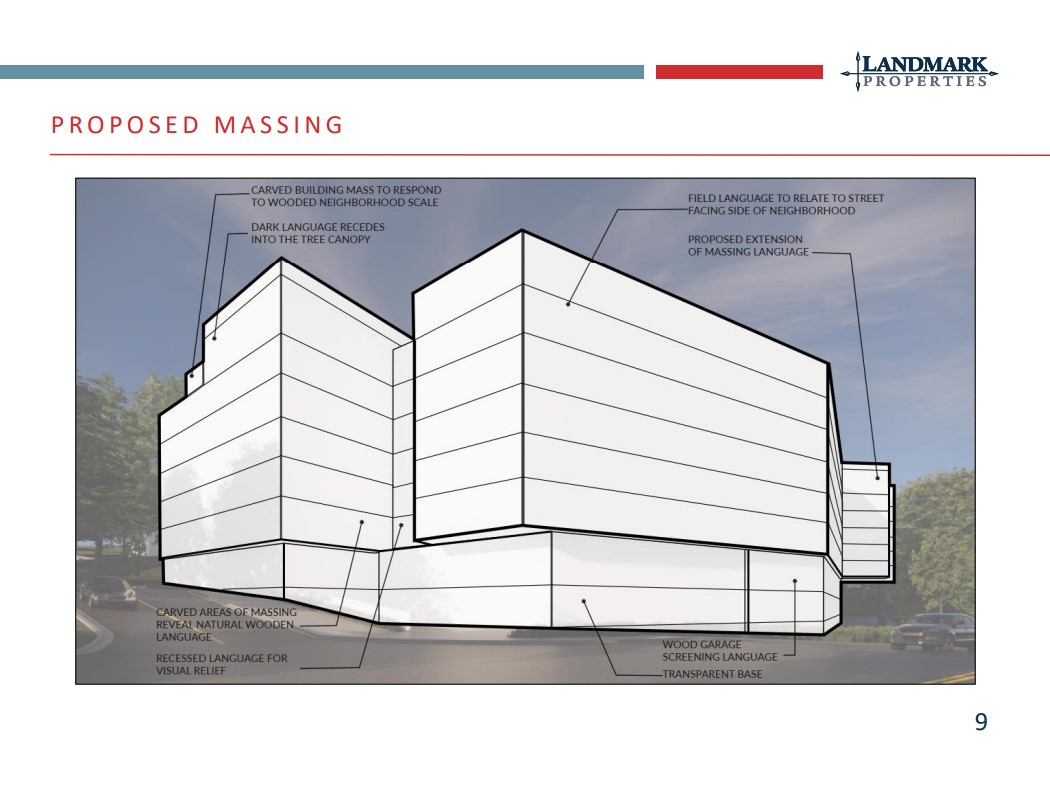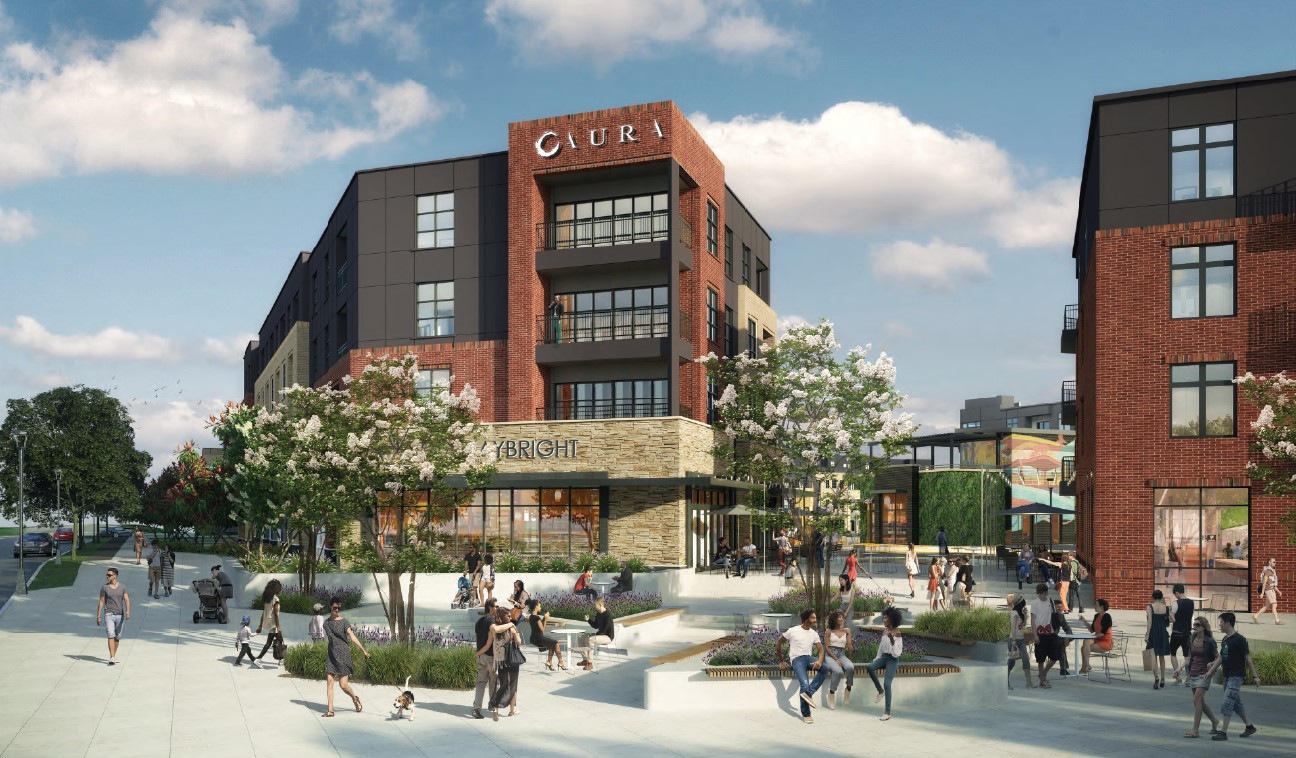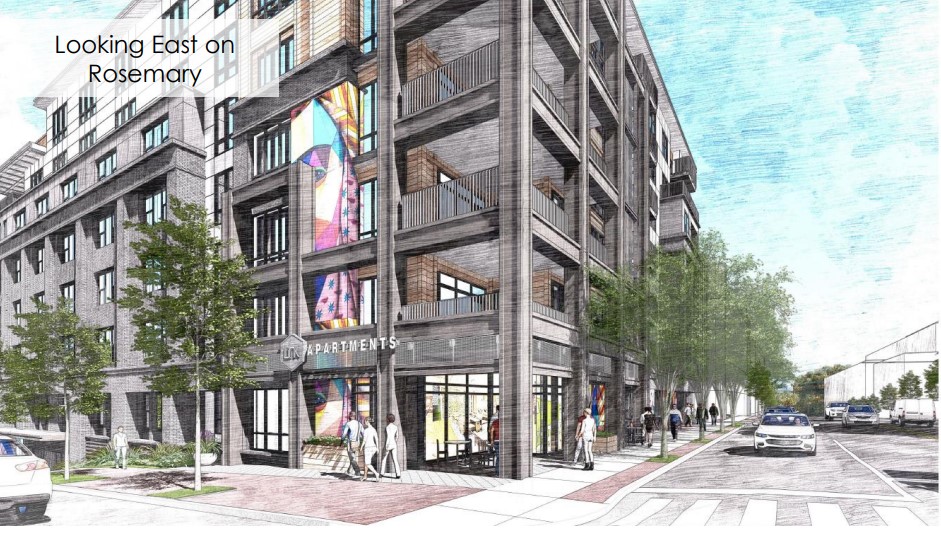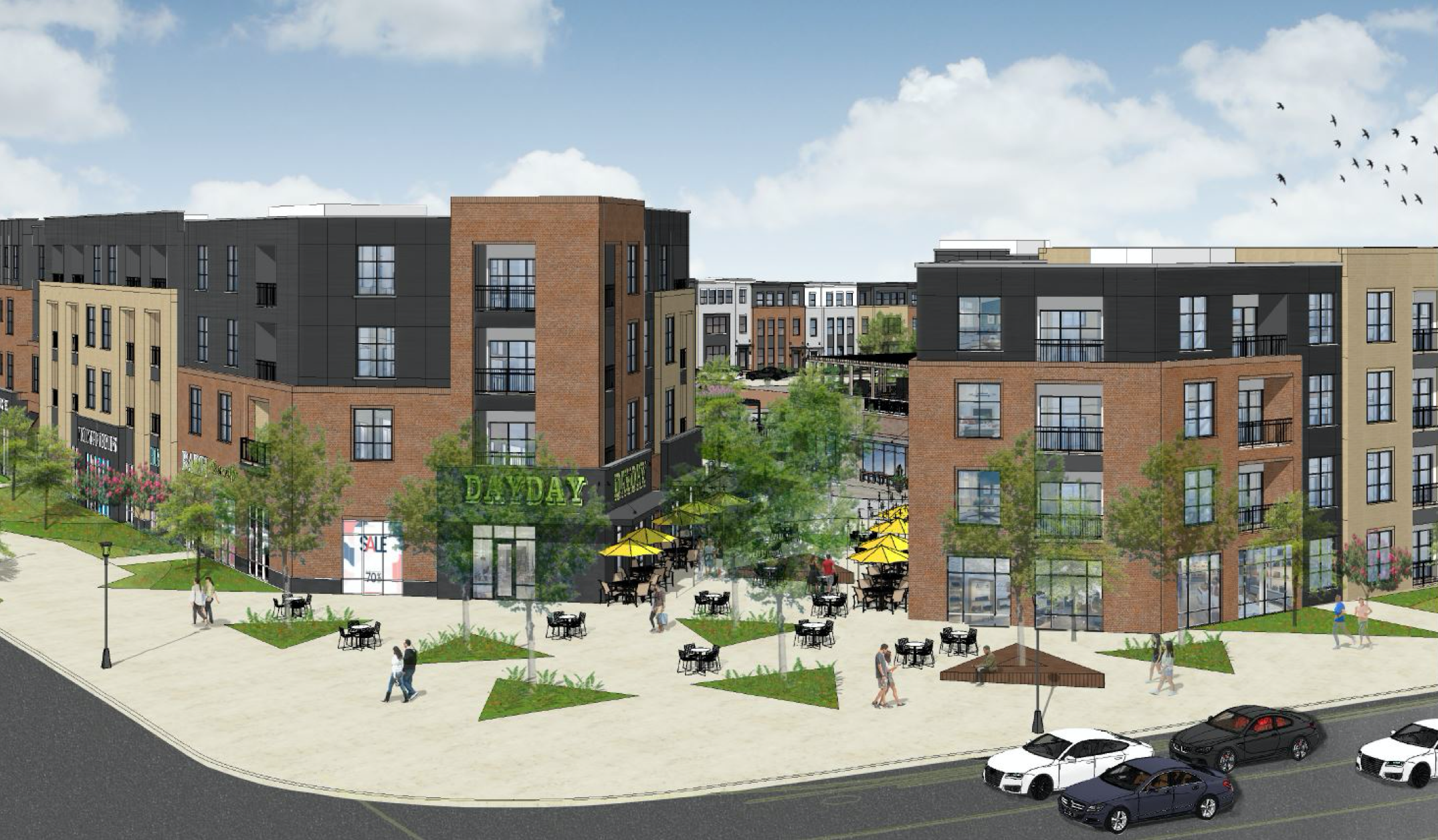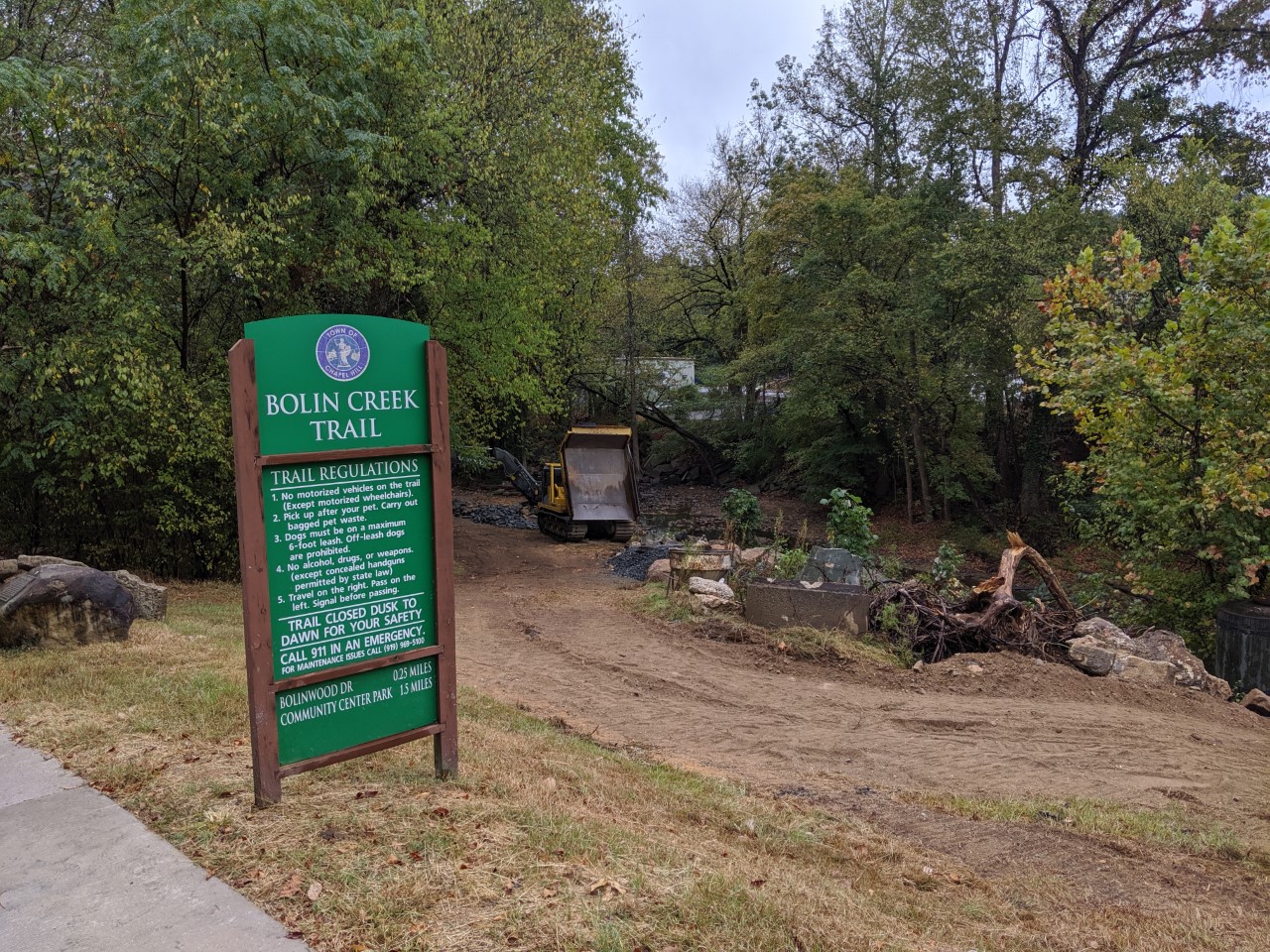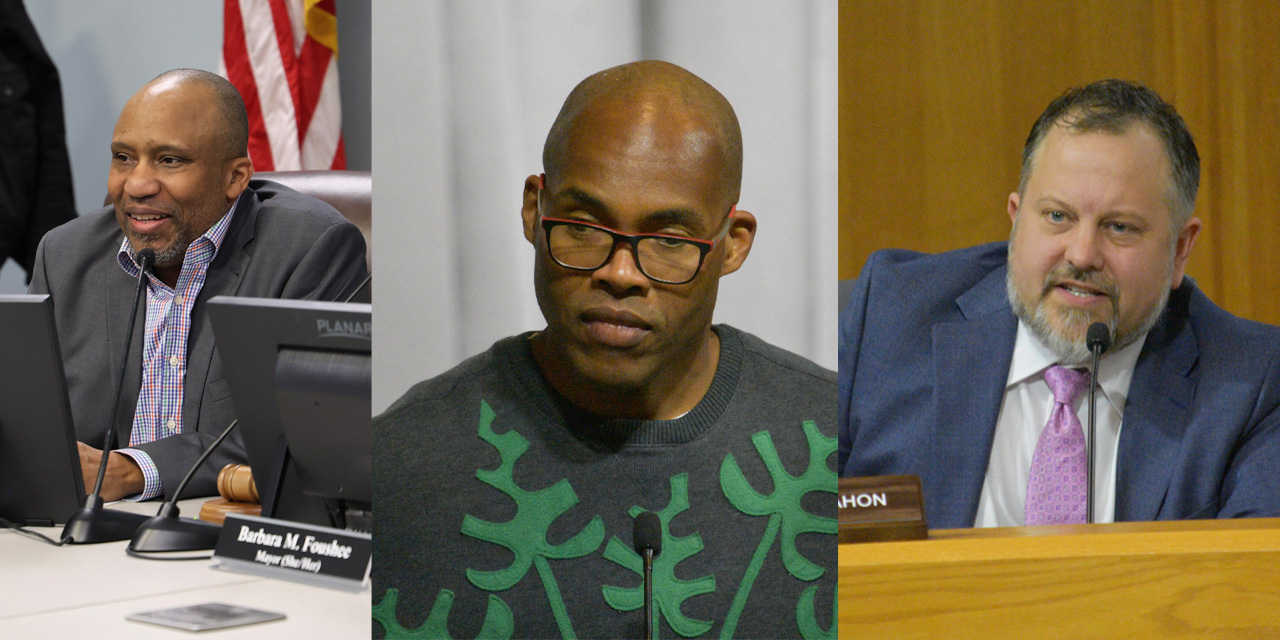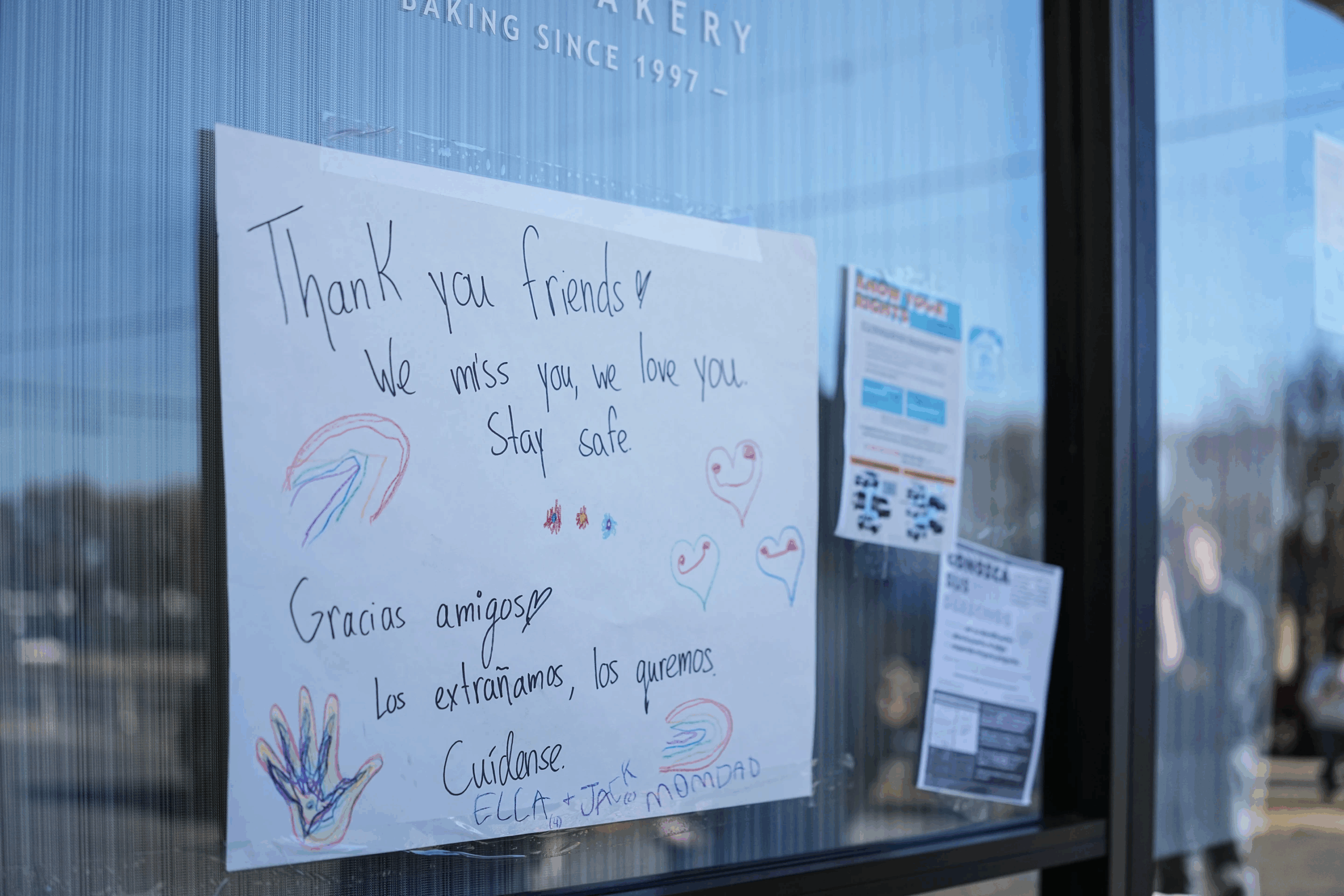The Chapel Hill Town Council recently reviewed a concept plan for a proposed multifamily development at 701 Martin Luther King Jr. Boulevard. But it was unclear if the property should appeal to students, and the elected officials shared differing views at a meeting on Nov. 13.
Located at the corner of Longview Street and Martin Luther King Jr. Boulevard, the proposed six-to-eight-story multifamily project seeks to bring 175 more living units close to UNC’s campus and downtown, while also encouraging multimodal transportation, like public transit, biking, and walking.
The site is within walking distance to Bolin Creek Trail and Franklin Street, and is located near the planned Longview bus stop for Chapel Hill’s future North-South BRT line.
“That is an ideal place for students, it’s an ideal place for workforce households, it’s an ideal place for many who want to be able to get somewhere quickly,” Council Member Camille Berry told Landmark Properties Development Manager Bryan Boyles.
Boyles said the property seeks to enhance the pedestrian experience, widening the street’s sidewalks, incorporating seating and landscaping near the future bus line, and encouraging public transit over car use. The design also features a public plaza for community gathering, electric vehicle charging stations, and bike storage and parking.
Repeated praises from the council centered around the project’s ability to increase density near downtown and along the bus line, but a point of debate centered around whether the property should attract students. The site previously was considered for development as Aspen Chapel Hill, which aimed to create a student-only apartment community — and which the town council effectively killed with its comments urging for it to be available for non-students.
Chapel Hill Mayor Jess Anderson said the project is a way to extend Chapel Hill’s downtown around the corner to MLK, and Council Member Elizabeth Sharp said she wants to place year-round residents close to the commercial spaces.
Council Member Melissa McCullough said she would like the property to discourage student living.
“We need things for people besides students, and if it becomes largely populated by students, it’s not as attractive for people who aren’t students,” she said. “I’m wondering what you might do to be able to make it less attractive to students.”
For example, McCullough suggested the design include a courtyard instead of a swimming pool.
But several members said the MLK corridor is a key area for students to live. Council Member Karen Stegman added the council has heard from residents that they do not want students living in established neighborhoods, but because Chapel Hill is a college town, students need somewhere else to live.
“I think that it would be lovely for UNC to suddenly decide they’re going to build lots of student housing,” said Stegman. “But that’s not actually going to happen, so I think we have to deal with what our reality is as it is before us.”
Anderson said she wants the town to provide housing anyone can live in.
“I think sometimes when we do purpose-built student housing, then other people don’t live there,” she said. “But I certainly would love for students and employees and seniors, and everybody to live there, so I’m hoping you can design something that creates a place that is not just for one demographic.”
But most council members agreed the project team should return with a more aggressive affordability plan.
The proposed concept design included a few affordable housing options. The first is a master lease, where Boyles said the property would lease up to five units to the town for affordable housing. Another would designate a minimum of 7 percent of total units as affordable units.
The development manager added the team is also exploring options for affordable retail and an affordable co-working space. Or, he continued, the property could contribute land to a local affordable housing developer to build affordable units.
However, Berry said she prefers affordable housing to be on the site, as opposed to somewhere else. Because the site is close to public transit, she said it is ideal for those with restricted income, like low-income families and students.
Another repeated concern from the council focused on the building’s massing.
“The thing that troubles me the most about this concept as it exists now is that it is a reiteration of what we’re trying to get away from, which is a big, blocky building along a busy road,” said Sharp.
Boyles said the building would reach up to eight stories, three of which are designated as below-ground parking garages. However, he said only five stories would be visible to the neighboring duplexes.
The design currently sets the property 60 feet from that neighborhood, and Boyles added existing trees work to provide natural coverings.
Sharp suggested breaking up the building’s mass through Charleston-style block housing and mews housing, which she said could achieve the same density and also promote bikeability and walkability.
McCullough added she worries there is too much parking.
“If it’s on the BRT route, having more than one parking space per unit seems wasteful,” she said. “If you decoupled the parking fee from the rent, you might be able to encourage people who just have one car or who are car free to choose your place, because you won’t be paying for something they aren’t using.”
The council member added this provides an opportunity to decrease the number of parking spaces on the property, potentially even removing a layer off the building or allowing more room for affordable housing units.
The current design also features a plaza at the community’s leasing office, complete with benches and anything that would invite the community to gather, Boyles said. However, the council expressed interest in wanting to see a more thoughtful plan for the property’s community gathering space.
McCullough said food typically encourages gathering, and Berry encouraged spaces where people can socialize both during the day and night.
“At Southern Village we have La Vita Dolce. That’s a great venue because they go from coffee, to gelato, they have sandwiches, they even sell wine,” she said. “So you can linger there all day long, and that’s something I would encourage you to do.”
To watch the full town council meeting, click here.
Featured image via Landmark Properties.
Chapelboro.com does not charge subscription fees, and you can directly support our efforts in local journalism here. Want more of what you see on Chapelboro? Let us bring free local news and community information to you by signing up for our newsletter.

